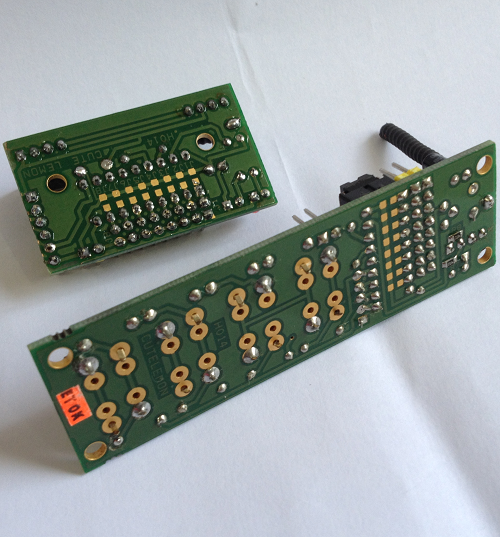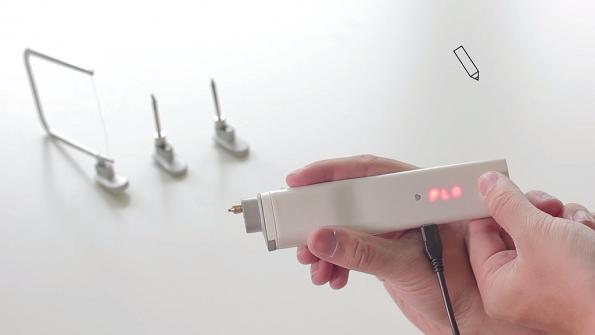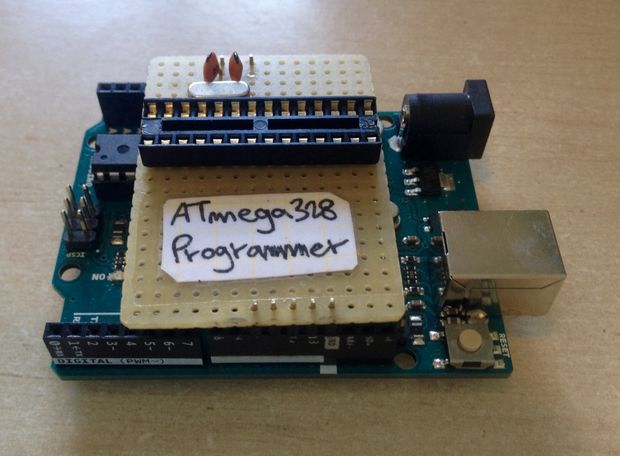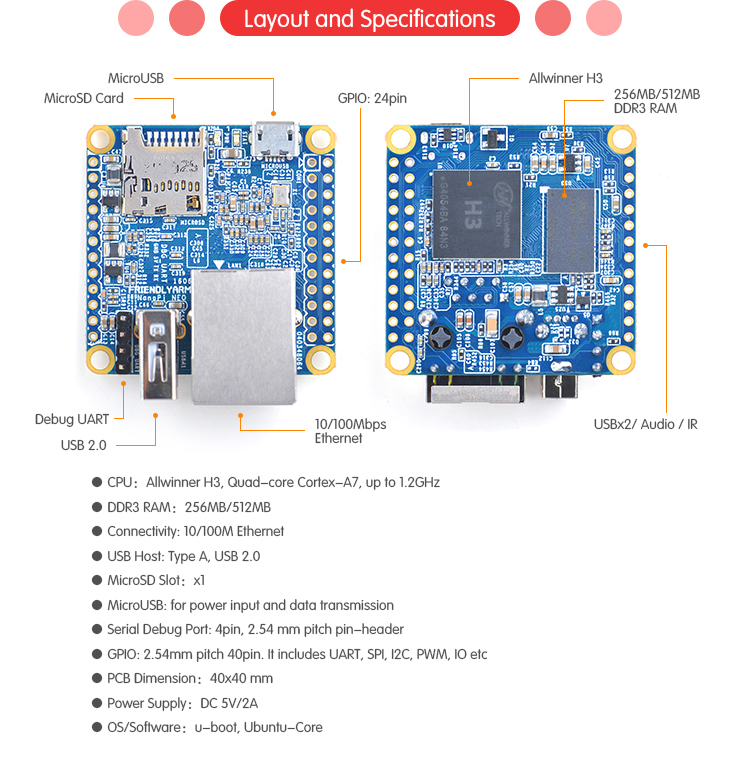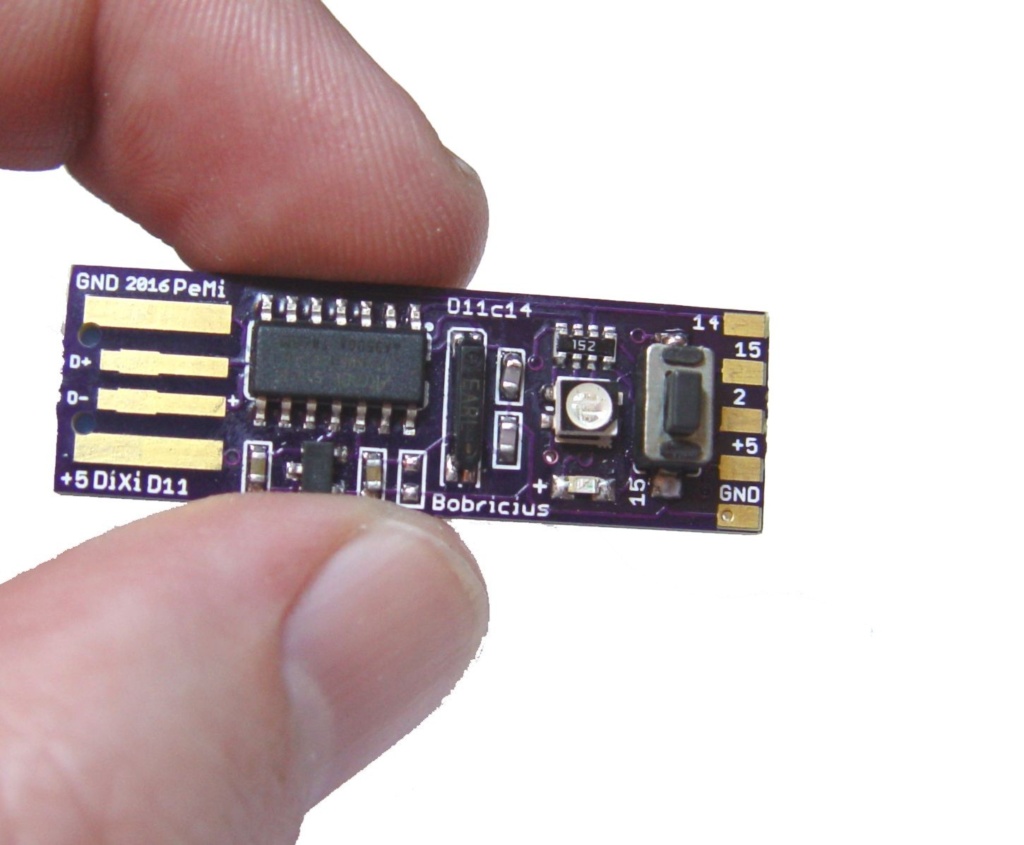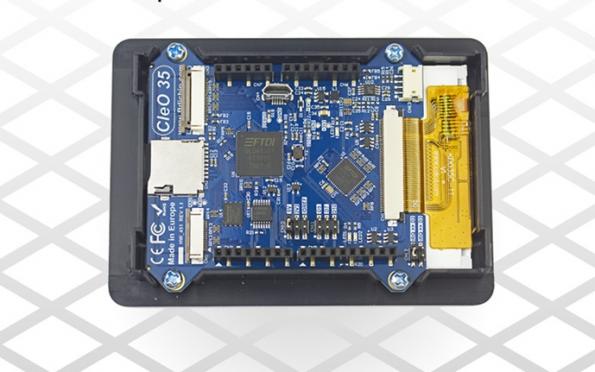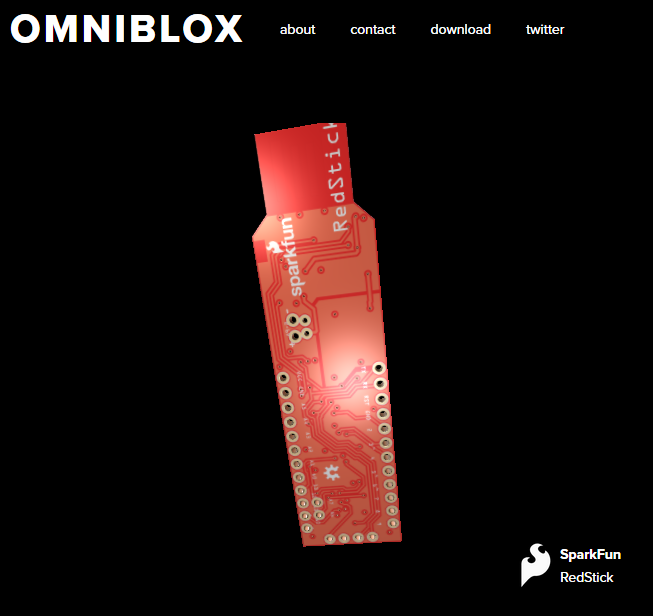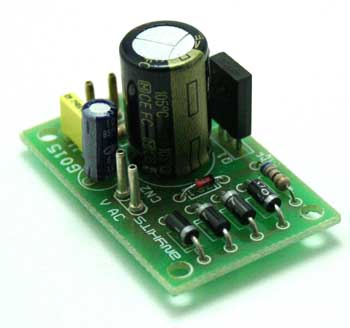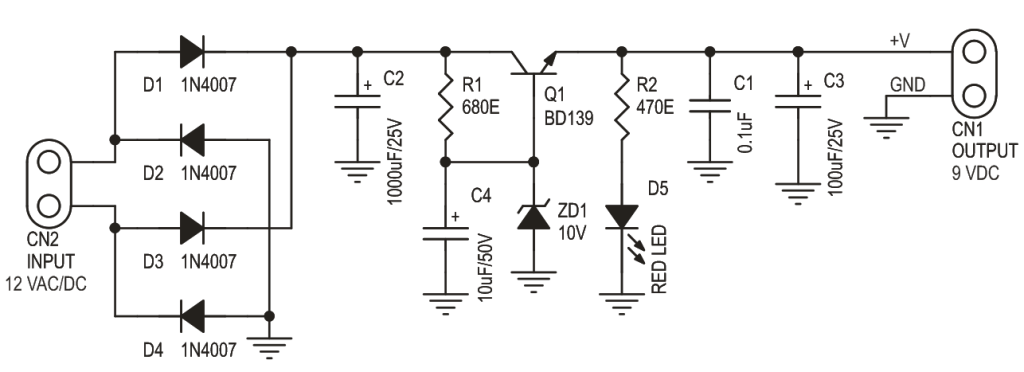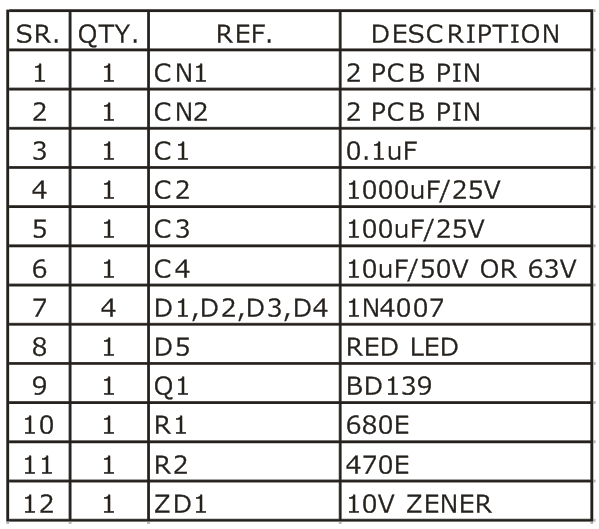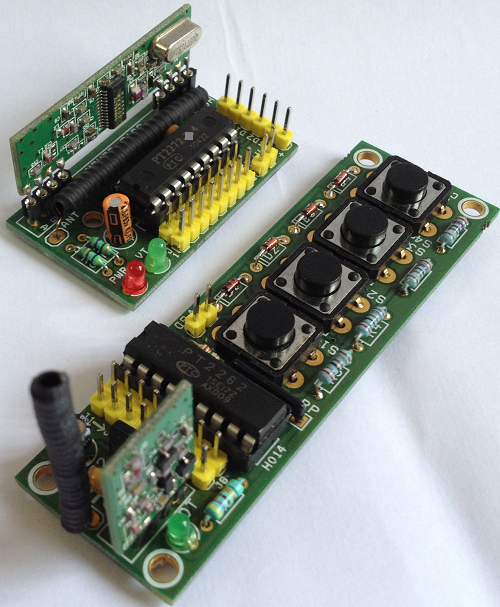
4 Channel RF remote built using PT2262 and PT2272-M4 IC from Princeton technology. PT2262 used as Encoder (Transmitter) and PT2272-M4 Decoder (Receiver) ICs are heart of the project. The receiver provides 4 channel Momentary outputs. All outputs are TTL level can be interface with other circuits or relay board. Transmitter works with 5V to 12V DC. Receiver works with 5V DC.
When any of SW1-SW4 (S1-S4) tact switch is pressed the, power is applied to encoder IC and RF transmitter module, the encoder then starts scanning Jumper J1-J8 and transmitting the status of the 8 bits address and data serially. The decoder IC receives the data and compares two times with J1-J8 address jumpers and provides outputs high and also VT LED goes On, if the data is Valid and address of Transmitter and Receiver are same. It is important to have same jumper settings J1-J8 at transmitter and receiver to pair both. Multiple remote can be used to control devices at same location by changing the address codes. All address is Tri-State and offers 6561 combinations.
Encoder – Transmitter (PT2262)
PT2262 is a remote control encoder paired with PT2272 utilizing CMOS technology. Its encode data and address pins into a serial coded waveform suitable for RF modulation. Circuit uses 8 bits of tri-state address pins providing up to 6561 address codes, thereby, drastically reducing any code collision and unauthorized code scanning possibilities.
PT2262 encodes the code address and data set into special waveform and outputs it to the DOUT when TE is pulled to low. The wave is fed to RF modulator (ASK RF TX Module) for transmission. The transmitted radio frequency is received by RF demodulator (ASK RF RX Module) and reshaped to special waveform. PT2272 is then used to decode the waveform and set the corresponding output pins. Thus completing a remote control encoding and decoding function.
Decoder Receiver (PT2272-M4)
PT2272 decodes the waveform received and fed in to the DIN pin. The waveform is decoded into code word that contains the address, data and sync bits. The decoded address bits are compared with the address set at the address input pins. If both address match for 2 consecutive code words, PT2272 drives the data output pins whose corresponding data bits is the decoded to be a 1 bit, and (2) the VT output — to high state.
VT (Valid Transmission)
When PT2272 receive a transmission code word, it initially checks weather this is a valid transmission. For a transmission to be valid, (1) it must be complete code word, and (2) the address bits must match the address setting at the address pins. After two consecutive valid transmission, PT2272 (1) drives the data pins according to the data bits received, and (2) raises VT to high state.
NOTE : Jumper J1 to J8, To set High Jumper provided at Bottom layer of PCB, Jumpers and closure provide to set low, don’t use any of these for floating.
Features
- Wide Range of Operation Voltage 5V to 12V Transmitter
- Supply 5V DC Receiver
- On Board Data Transmission LED
- Single Resistor Oscillator
- 4 Momentary Outputs
- 4 Outputs TTL Level
- Address setting 3 states HIGH, LOW, And FLOATING)
- Remote provides 6561 addressable combinations by setting up J1-J8 to High, Low, and Floating.
- On Board Power and Valid Transmission LEDS Receiver
- ASK Modulation
- RF link work on 433.92 MHz Frequency
- CMOS Technology
- Low Power Consumption
- Very High Noise Immunity
- Up to 8 Tri-State Code Address Pins
- PCB Dimensions Transmitter 36MM X 26.67MM
- PCB Dimensions Receiver 45.40 MM X 26.67
Application
- Car Security System
- Garage Door Controller
- Remote Control Fan
- Home Security
- Automation System
- Remote Toys
- Robots
- Remote Control for Industrial Use
Schematics
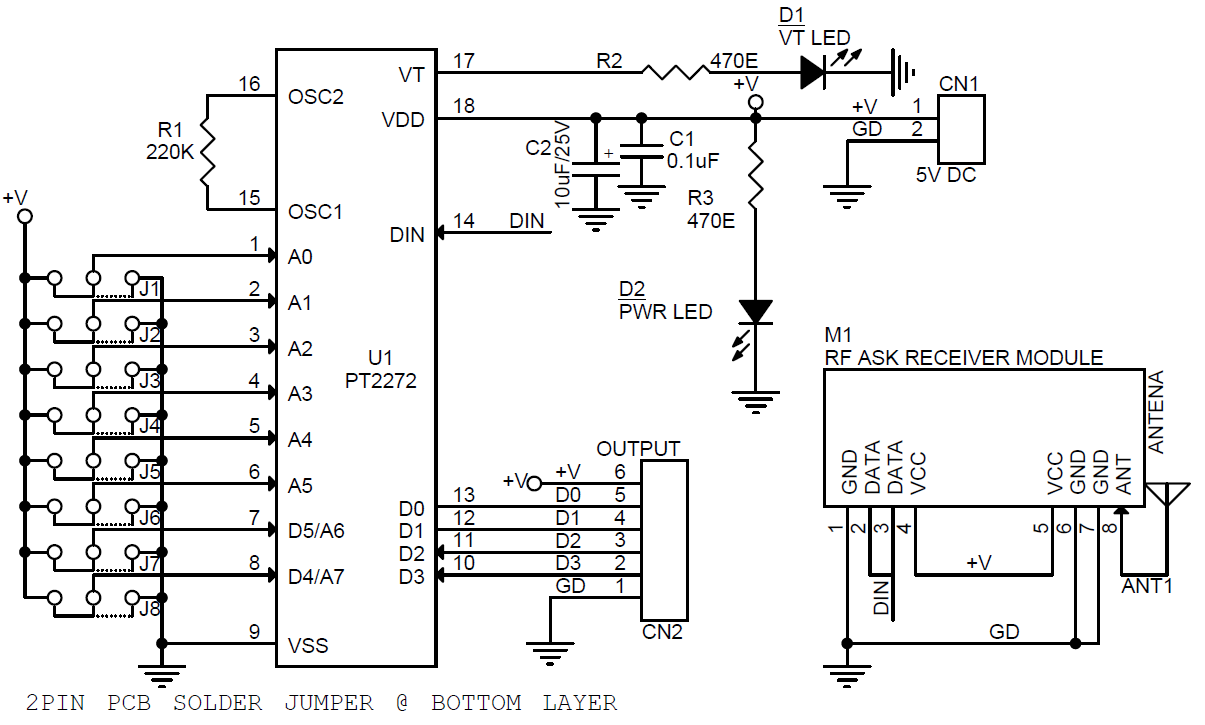
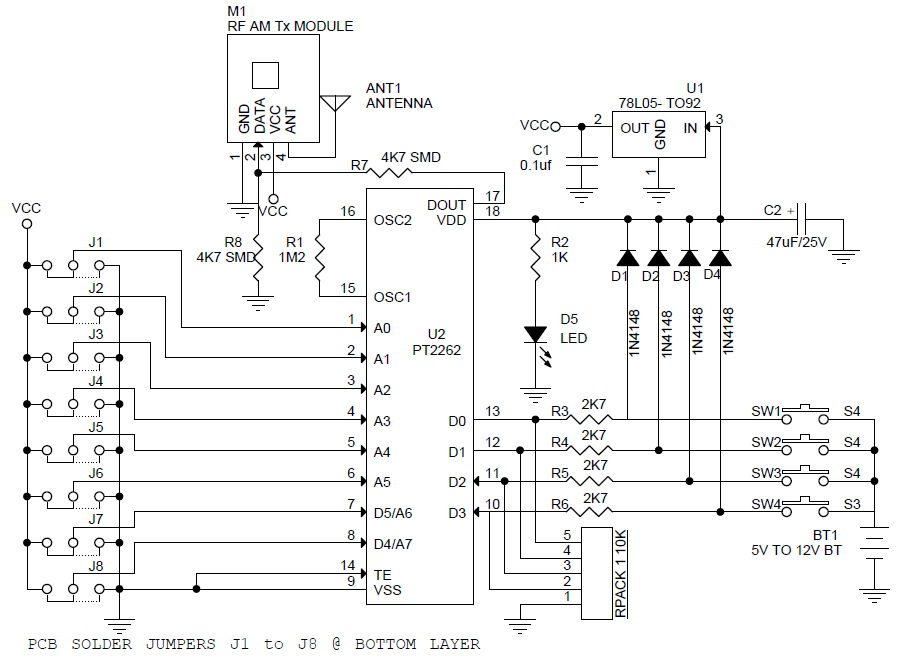
Parts List
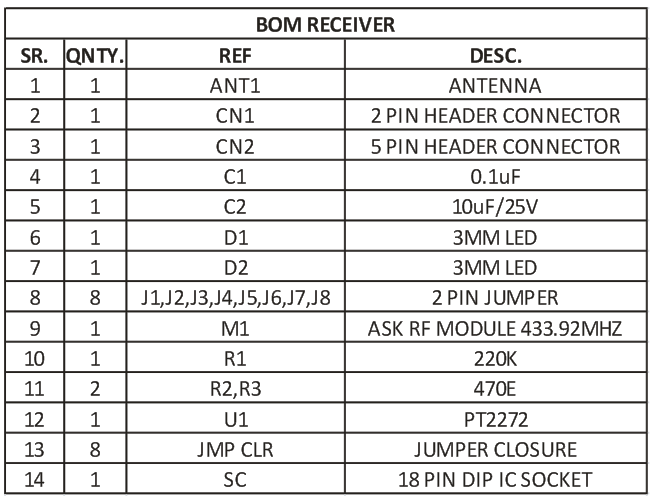
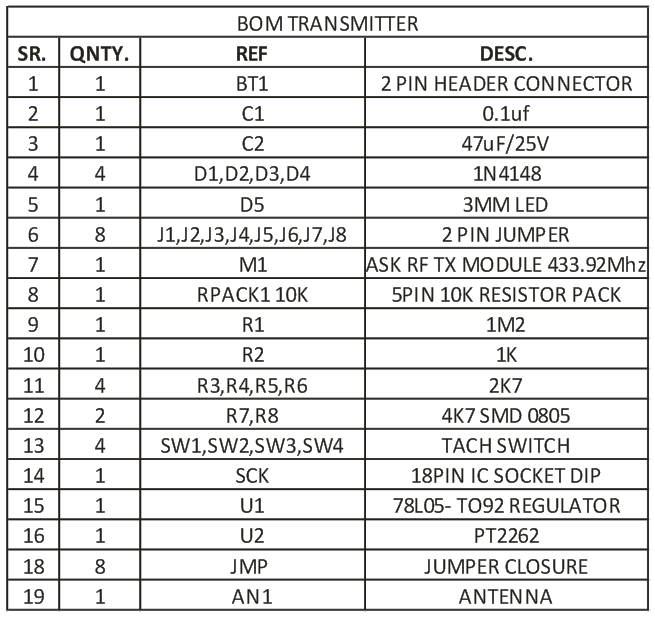
Wiring diagram
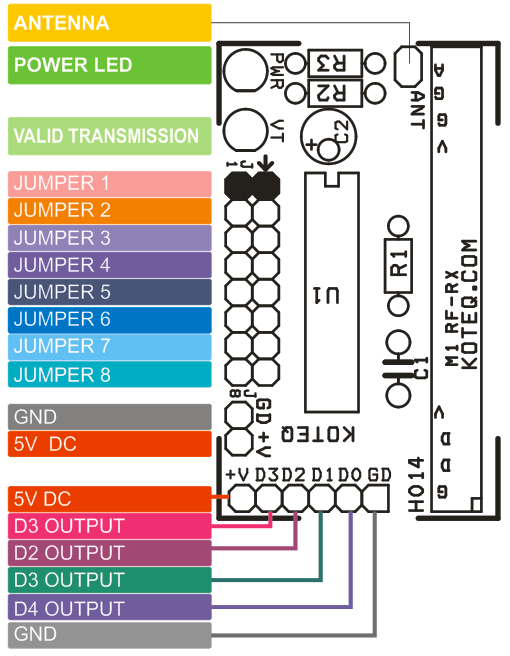
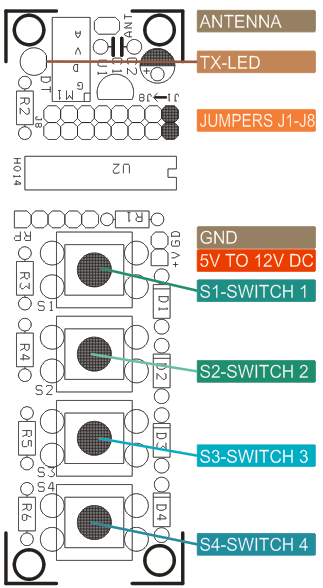
Photos
